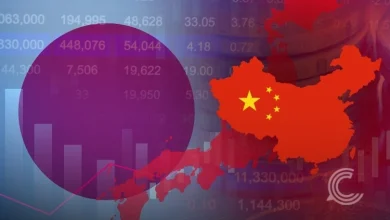Oil Prices Drop Amid Escalating US-China Trade Tensions

Key highlights-
- Oil prices rebound on early signs of easing US-China trade tensions, with Brent at $63.54 and WTI at $59.71 per barrel.
- OPEC maintains optimistic outlook for global oil demand in 2025-26, projecting growth of 1.3–1.4 million barrels per day.
- Trade frictions and geopolitical tensions continue to weigh on the market, with potential impact from rare earth export controls and Ukraine-related supply concerns.
Oil prices experienced a modest rebound on Tuesday, buoyed by early signs of de-escalation in trade tensions between the United States and China. Brent crude futures rose 0.4% to $63.54 per barrel, while U.S. West Texas Intermediate (WTI) crude increased by the same margin to $59.71 per barrel.
U.S. Treasury Secretary Scott Bessent confirmed that President Donald Trump remains committed to engaging with Chinese President Xi Jinping in an upcoming summit in South Korea later this month. The anticipated high-level dialogue aims to reduce escalating tariff threats and relax export restrictions that have previously weighed heavily on trade relations and supply chain flows. Bessent noted increased communication between the two sides over the preceding weekend and forecasted further discussions in the near term, signaling a potential roadmap toward diplomatic progress.
Year-on-Year Declines Reflect Broader Concerns
Despite the recent uptick, oil prices remain significantly lower compared to the same period last year. Brent crude is down over 14%, while WTI has dropped by more than 15%.
The narrowing of the WTI futures curve, where the premium for near-term contracts over longer-dated ones has decreased to its smallest since January 2024, indicates market apprehension about future demand. Analysts attribute this narrowing to increased supply from OPEC+ and seasonal refinery maintenance in the U.S., which has pressured demand for prompt barrels, as reported by Reuters.
OPEC’s Optimistic Outlook Amid Market Volatility
Despite recent volatility, OPEC remains optimistic about global oil demand growth for 2025 and 2026. In its October Monthly Oil Market Report (MOMR), the cartel maintained its forecast of about a 1.3 million barrels per day (bpd) increase in global oil demand this year, reaching an average of 105.1 million bpd. The projection for 2026 is an even larger increase of around 1.4 million bpd, driven primarily by robust economic activity in China, India, and other Asian markets. Key drivers include continued recovery in air travel and strong petrochemical feedstock demand.
Additionally, OPEC suggested there will be a smaller supply deficit in 2026 as the broader OPEC+ alliance continues to gradually unwind production cuts. The group anticipates that supply will more closely balance demand, easing some previous tightness in the market.
Supply Chain Concerns and Geopolitical Tensions
Last week witnessed heightened uncertainty when China expanded export controls on rare earth materials, a critical input in many high-tech industries, provoking a firm retaliatory stance from the Trump administration, which announced plans to impose 100 per cent tariffs on Chinese exports to the U.S. alongside new export restrictions effective November 1.
Also Read | US Sanctions China Refinery, Vessels Over Iran Oil Trade
The potential ramifications for global supply chains, particularly in sectors heavily reliant on rare earths and high-tech components, have compounded worries about slower economic growth and muted oil demand. However, President Trump’s recent softer rhetoric and willingness to negotiate with China have brightened market sentiment. Despite this, tariffs and export controls remain scheduled, leaving an element of uncertainty hanging over the market.
Furthermore, geopolitical tensions continue to loom, notably with U.S. considerations about supplying Ukraine with long-range weaponry, which could provoke Russia and affect oil supplies from key producers within the OPEC+ framework, adding another layer of complexity to the oil price outlook.
EIA’s Conservative Forecast Amid Rising Inventories
The U.S. Energy Information Administration (EIA) offers a slightly more conservative outlook, forecasting Brent prices to average around $62 per barrel in the fourth quarter of 2025 and decline to about $52 per barrel in the first half of 2026, emphasizing concerns about rising global oil inventories and potential oversupply risks.
Global oil inventories are expected to build by an average of approximately 2.6 million barrels per day during the last quarter of 2025 and remain elevated into 2026. This stock accumulation pressure stems from ongoing production increases combined with the risks presented by trade frictions and possible economic slowdowns. Analysts highlight that while demand growth remains intact, balance is delicate and pricing is susceptible to both geopolitical shocks and macroeconomic disruptions.



